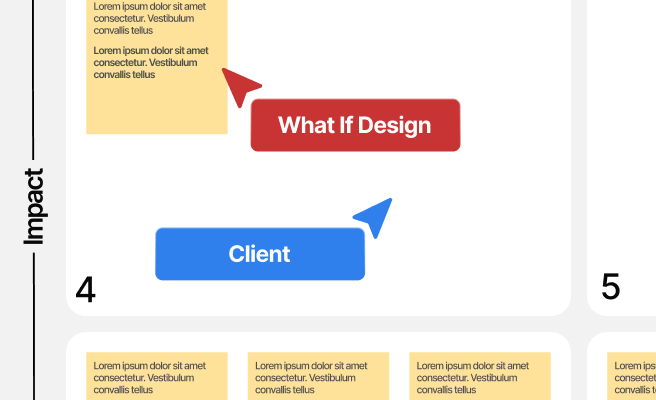User Journey Mapping
<p>User journey mapping is a crucial technique in the realm of product design, particularly for those aiming to create intuitive and user-centric digital products. It involves visualizing the steps a user takes to engage with a product, from the initial awareness stage through to their final interaction. This method helps designers understand user experiences, identify pain points, and ultimately, enhance overall user satisfaction.</p>
<p>Historically, user journey mapping has been an essential component of user experience (UX) design, tracing its roots back to the early days of human-computer interaction studies. Today, it remains relevant across various industries, including climate tech, where understanding user interaction with digital solutions can drive significant improvements in product adoption and effectiveness.</p>
<h2>Components of User Journey Mapping</h2>
<p>Breaking down the user journey involves several key components:</p>
<ul>
<li><strong>User Personas:</strong> Detailed profiles representing different segments of your target audience. These personas encompass demographics, goals, needs, and behaviors.</li>
<li><strong>Stages of the Journey:</strong> Typically divided into awareness, consideration, decision, and retention stages. Mapping these stages helps in understanding user motivations and actions at each point.</li>
<li><strong>Touchpoints:</strong> Specific interactions users have with the product or brand across various stages. These could include website visits, social media engagements, or customer service interactions.</li>
<li><strong>User Actions:</strong> The activities users perform during each stage, such as searching for information, comparing solutions, or making a purchase.</li>
<li><strong>Pain Points:</strong> Challenges or obstacles users face during their journey. Identifying these helps in crafting better solutions to improve the user experience.</li>
<li><strong>Emotions:</strong> The feelings and attitudes of users at different stages. Understanding these can guide the design of more empathetic and engaging experiences.</li>
</ul>
<h2>Benefits of User Journey Mapping</h2>
<p>Implementing user journey mapping offers several significant benefits:</p>
<ul>
<li><strong>Enhanced User Experience:</strong> By identifying and addressing pain points, designers can create more intuitive and satisfying user interactions.</li>
<li><strong>Informed Decision Making:</strong> Provides actionable insights that can guide product development, marketing strategies, and customer support improvements.</li>
<li><strong>Alignment Across Teams:</strong> Ensures that all stakeholders have a unified understanding of the user journey, fostering collaboration and coherence in strategy execution.</li>
<li><strong>Increased User Retention:</strong> By optimizing the journey, companies can enhance user loyalty and reduce churn rates.</li>
</ul>
<h2>Challenges in User Journey Mapping</h2>
<p>Despite its advantages, user journey mapping can also present challenges:</p>
<ul>
<li><strong>Complexity:</strong> Mapping the journey for products with multiple user personas and touchpoints can be complex and time-consuming.</li>
<li><strong>Data Collection:</strong> Gathering accurate and comprehensive data about user interactions and experiences can be challenging.</li>
<li><strong>Keeping Maps Updated:</strong> User behaviors and expectations evolve, requiring continuous updates to the journey maps to stay relevant.</li>
</ul>
<h2>Real-World Examples</h2>
<p>One notable example in the climate tech sector is the design of user interfaces for carbon footprint tracking apps. Companies like <a href="https://www.joro.app" style="color: #2896FF; text-decoration: underline;">Joro</a> and <a href="https://www.earthhero.org" style="color: #2896FF; text-decoration: underline;">Earth Hero</a> use user journey mapping to understand how users interact with their platforms. By identifying pain points such as difficulty in data input or lack of engaging visuals, these companies have been able to refine their apps, making them more user-friendly and effective in promoting sustainable behaviors.</p>
<h2>Practical Steps for Creating a User Journey Map</h2>
<p>To create an effective user journey map, follow these steps:</p>
<ol>
<li><strong>Define User Personas:</strong> Create detailed personas representing your target audience.</li>
<li><strong>Identify Key Stages:</strong> Outline the main stages of the user journey relevant to your product.</li>
<li><strong>Map Touchpoints and Actions:</strong> Document where and how users interact with your product and the actions they take.</li>
<li><strong>Gather Data:</strong> Use analytics, user feedback, and other data sources to validate your assumptions and refine the journey map.</li>
<li><strong>Visualize the Journey:</strong> Use tools like <a href="https://www.miro.com" style="color: #2896FF; text-decoration: underline;">Miro</a> or <a href="https://www.canva.com" style="color: #2896FF; text-decoration: underline;">Canva</a> to create a visual representation of the journey.</li>
<li><strong>Analyze and Iterate:</strong> Continuously review and update the journey map based on new data and user feedback.</li>
</ol>
<h2>Conclusion</h2>
<p>User journey mapping is an invaluable tool for enhancing user experience and driving product success. By thoroughly understanding the user journey, climate tech companies and other sectors can create more effective and engaging digital products. <p>To understand the power of design across industries and sectors, view our diverse portfolio of works. <a href="https://www.whatifdesign.co/work" style="color:#2896FF; text-decoration:underline;">View our portfolio</a>.</p> <p>Increase user engagement that converts your demos into sales. Optimise your UX strategies with our audits.
<p>Fill out the <a href="https://tally.so/r/n97pxQ" style="color:#2896FF; text-decoration:underline;">UX Audit form</a> to get started. Ready to discuss your needs? <a href="https://cal.com/akhilak/what-if-design?duration=25" style="color:#2896FF; text-decoration:underline;">Book a consultation call</a> with us today.</p></p>

Let's scale your impact with great design.
Free consultation, no sales pitch
Thank you! Your submission has been received!
Oops! Something went wrong while submitting the form.
Let’s talk
Nothing great is built alone.
Let’s connect about your vision, our work and how we can collaborate.
Get in touch

